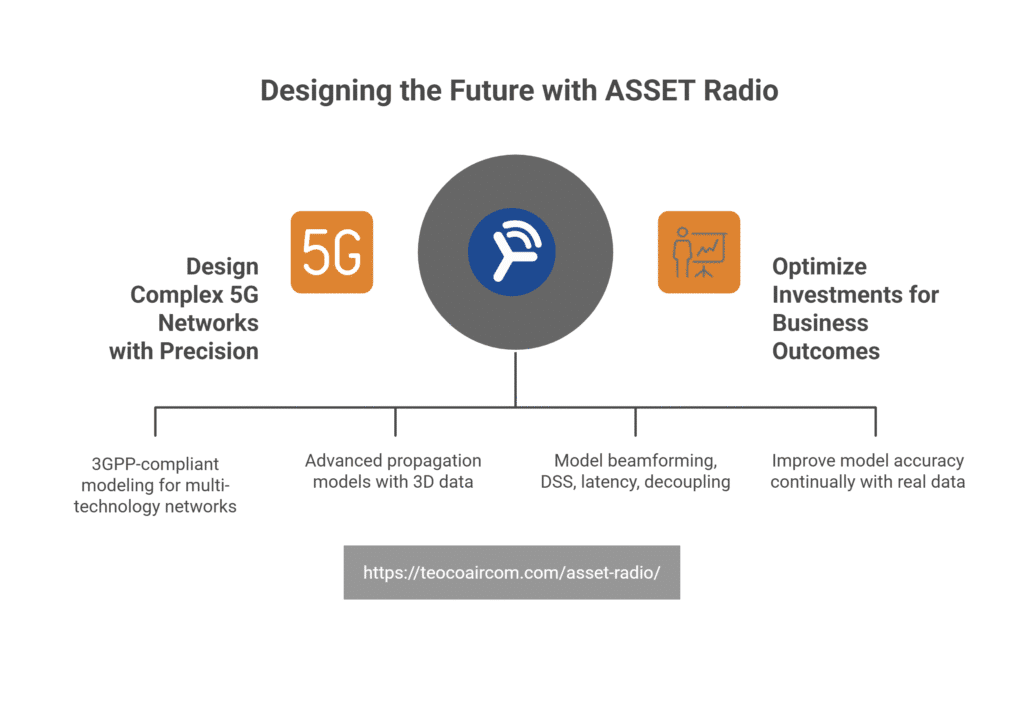Why Precision in Radio Planning is the Bedrock of 5G Success

The promise of 5G has been clear from the beginning: lightning-fast speeds, ultra-low latency, massive device connectivity, and a foundation for next-generation services ranging from industrial automation to immersive digital experiences.
But delivering on this promise is far from simple. Behind every new base station, every spectrum license, and every commercial launch lies a critical engineering discipline that determines success or failure: radio planning.
The New Demands of 5G
Unlike previous generations, 5G is not just “another upgrade.” It introduces fundamentally new challenges:
Spectrum fragmentation
Operators must manage assets across low-, mid-, and high-band frequencies, each with different propagation characteristics.
Densification
Small cells and massive MIMO antennas increase coverage and capacity but add planning complexity.
Advanced technologies
Features such as beamforming, dynamic spectrum sharing (DSS), and uplink/downlink decoupling require far more sophisticated modeling.
Service differentiation
Network slices for enterprise, IoT, and consumer services mean that planning must be aligned with business strategy as much as technical feasibility.
These factors make precision in radio planning not just desirable, but essential.

Why Precision Matters
For CXOs, precision translates directly into business outcomes. A network that matches real-world conditions reduces churn, maximizes spectrum ROI, and accelerates time-to-market for new services. Conversely, errors in planning can cascade into coverage gaps, poor quality of service, and expensive redesign cycles.
For engineers, precision is the difference between theory and reality. Planning models that fail to reflect actual propagation conditions create unnecessary troubleshooting, wasted drive testing, and a cycle of corrections that delay deployments.
Every dB of error in propagation modeling matters. At scale, those inaccuracies can cost millions in wasted CAPEX, OPEX, and lost opportunity.
The Evolution of Radio Planning
Historically, radio planning focused on coverage and capacity. While those remain critical, 5G expands the scope to include:
- Latency modeling to ensure URLLC (ultra-reliable low latency communication) services can be delivered.
- Throughput predictions across a mix of frequency layers, small cells, and macro cells.
- 3D modeling to capture the impact of buildings, vegetation, and urban clutter on higher-frequency signals.
- Traffic distribution mapping that leverages geolocated or crowdsourced data for realistic demand modeling.
In other words, radio planning is no longer just an engineering exercise. It is the bedrock of a CSP’s competitive positioning in the 5G era.
Precision as a Competitive Advantage
Operators that excel in radio planning gain three strategic advantages:
When 5G is viewed not just as technology but as a platform for new revenue streams, precision in radio planning becomes a strategic differentiator.
Designing the Future with ASSET Radio
This is where ASSET Radio enters the picture. As part of Aircom’s ASSET Suite, it is designed to address the complexity of 5G with precision at its core.
ASSET Radio offers:
- 3GPP-compliant modeling for multi-technology networks, from GSM through to 5G.
- Advanced propagation models that combine deterministic techniques with 3D building vector data.
- 5G-specific capabilities including beamforming, DSS, latency modeling, and uplink/downlink decoupling.
- Integration with real-world measurements and crowdsourced data to continually improve model accuracy.
For engineers, ASSET Radio provides the tools to deliver accurate, reliable, and future-ready network designs. For CXOs, it represents the assurance that every spectrum dollar and every infrastructure investment is optimized for business outcomes.
Conclusion
The rollout of 5G — and the preparation for 6G — will test operators’ ability to balance technical complexity with commercial urgency. At the heart of this challenge is precision in radio planning. It is the foundation upon which coverage, capacity, service quality, and ultimately customer loyalty are built.
ASSET Radio embodies this principle, bringing together advanced modeling, 5G-specific capabilities, and integration with real-world data to ensure that precision is not an aspiration, but a reality. By doing so, it helps operators design the networks of the future — networks that not only work in theory but excel in practice.
How can we help?
For over 25 years, Aircom has helped network operators run state-of-the-art mobile networks and profitable businesses. Learn how we can help you in the areas critical to the success of modern CSPs.







